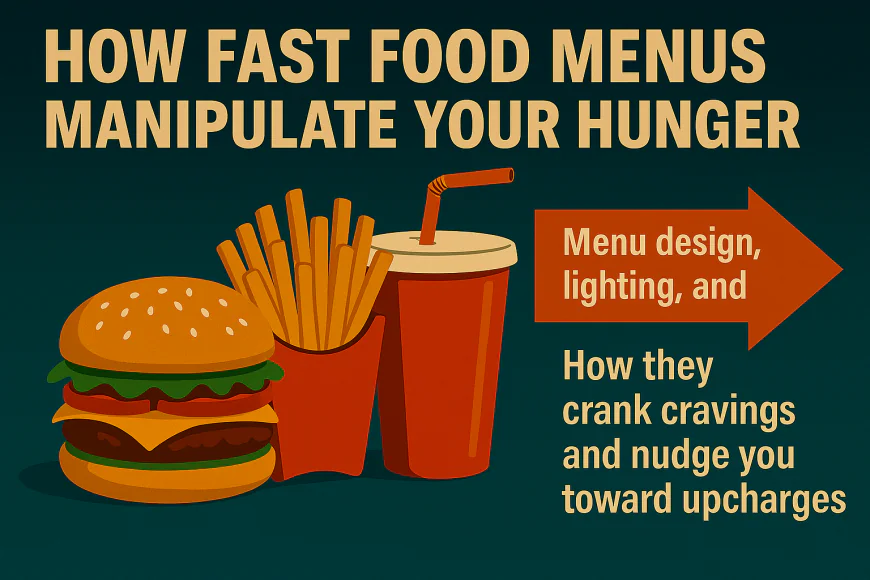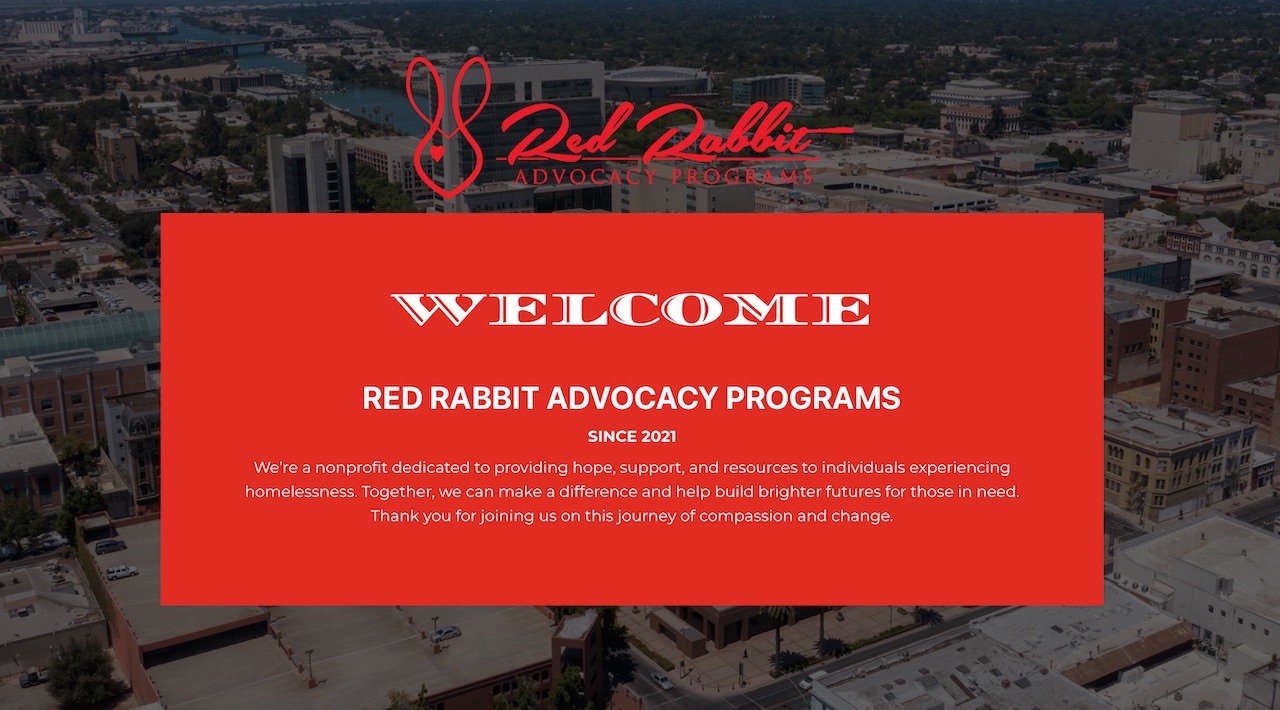How Fast Food Menus Manipulate Your Hunger
Menu design, lighting, and color triggers—how they crank cravings and nudge you toward upcharges.

You walk in hungry. You leave stuffed—and a few bucks lighter than expected. But you didn’t just order a meal. You were guided, nudged, and seduced by a system designed to push profit, not nutrition.
From the moment you glimpse a glowing menu board, fast food chains are working a playbook that taps deep into consumer psychology, sensory overload, and subtle design tricks. Here’s how they turn hunger into revenue—and why your taste buds were never really in control.
🍔 Color Psychology: Appetite by Design
Ever noticed that fast food brands love red and yellow?
-
Red stimulates urgency, excitement, and hunger
-
Yellow grabs attention and evokes warmth and friendliness
-
Together, they’re the ultimate combo for triggering impulse decisions
Think: McDonald’s, Burger King, Wendy’s—color schemes are no accident. These shades activate the limbic system (your emotional brain), increasing craving intensity and speed of decision-making.
Bonus: Red also raises blood pressure slightly—your body’s way of preparing for action. As in: “Order now.”
💡 Lighting & Mood: “Fast” Isn’t Just About Food
Lighting affects pacing. Harsh lighting = fast decisions. Soft lighting = linger longer.
-
Bright fluorescent lights encourage speed: get in, get out, make a choice
-
Directional lighting highlights premium items or combo offers
-
Window placement often exposes you to food visuals from the street—priming your brain before you even walk in
Even table height plays a role. Ever try working on a laptop at a high-top stool in a burger joint? Nope. That’s on purpose—because these places want turnover, not dwellers.
🧠 Menu Hierarchy: How Position Tricks Perception
Menus aren’t lists. They’re maps—and they’re drawn to guide your eyes:
-
Top-right corner = prime real estate (where our eyes naturally go first)
-
Boxes, highlights, icons = used to draw attention to high-margin items
-
Anchoring strategy: Place an expensive item up top to make others seem “reasonable” by comparison
Example: That $12 triple-stack combo? It’s there to make the $9 double-stack seem like a deal—even if both are engineered to upcharge you.
Menus also use scanning logic: people don’t read every item. So chains use visual anchors (photos, symbols) to steer your brain toward profitable decisions fast.
🔢 Pricing Psychology: “Just $1 More!”
“Only $1 more for a large!” Isn’t that a steal?
Here’s how that trick works:
-
Decoy effect: A mid-tier item exists mostly to push you to the top-tier one
-
Price priming: High prices first, followed by lower ones—even if the lower ones are still inflated
-
Bundling: Combos hide individual prices, so you think you’re saving… but you’re often spending more
Also notice how prices are rounded? Few decimals, no dollar signs—because $9.99 feels like less than $10, even though your wallet knows better.
🍟 Sensory Manipulation: Smell, Sound, and Timing
Fast food places smell amazing because they want you to lose inhibition:
-
Strategic venting pumps scents toward entrances
-
Grills near front windows show you live cooking (even if you’re ordering frozen nuggets)
-
Sizzling sounds and short order bell dings add excitement and urgency
Even packaging sound is part of the scheme—crinkle bags, soda fizz, fry shuffles—all build anticipation and sensory satisfaction.
Your brain sees, hears, and smells a meal before it hits your tray. That’s not dining. It’s orchestration.
💬 Language & Labels: Emotional Sales Copy
Menus aren’t just informative—they’re persuasive.
-
“Freshly grilled” instead of “microwaved”
-
“Savory blend of spices” for a standard salt packet
-
“Crafted” makes a $1 burger sound artisanal
Descriptive language boosts sales by up to 27% in some studies. Add a “chef’s recommendation” star? Boom—watch that item outperform its boring twin.
You’re not reading nutritional facts. You’re reading a short story—written to sell emotion and comfort, not substance.
🔒 The Secret Menu: FOMO on Purpose
Ever hear about off-menu items like “Animal Style” or “McGangBang”? You weren’t meant to know about them—until you did.
“Secret menus” are social FOMO bait:
-
They create insider status: if you know, you belong
-
They bypass health disclosures (since they’re not officially listed)
-
They’re designed to spread via social media, not signage
In other words: bonus sales, zero accountability. And you feel clever for ordering it.
🧾 The Upcharge Funnel: How You Spend More Than You Think
Fast food chains know most people don’t budget down to the penny for their meal. So they build an upcharge funnel:
-
You order a base combo
-
You're offered an upgrade or add-on
-
You throw in a dessert or drink with bonus points
-
You accept the round-up for charity
-
You tip the digital kiosk
And just like that—your $7 lunch becomes $14.
You don’t notice because it’s segmented, fast, and framed as “rewarded generosity.”
🚨 How to Break the Craving Loop
Eating fast food isn’t a crime—but recognizing the manipulation is empowerment.
-
✅ Scan menus deliberately: focus before emotion kicks in
-
❌ Ignore combo “discounts”—do the math yourself
-
📱 Use apps with caution: they gamify hunger
-
💡 Eat before entering to reduce visual/scent triggers
-
🔒 Know the tricks—they lose power once revealed
The next time a menu flashes “Double Bacon Blast—Only Today!”, you’ll see the real recipe: psychology, profit, and behavior design.
💥 Hunger Is Natural. Spending Blindly Isn’t.
Fast food chains aren’t just serving meals—they’re shaping habits.
And unless you shine a light on the system, your cravings may keep driving the cart. But now? You know better.
And nothing kills manipulation faster than a well-fed brain.
🔍 Trusted Sources We Gathered Information From for This Article
| Topic | Source | Link |
|---|---|---|
| Menu Psychology & Design | Aaron Allen & Associates | The Psychology of Restaurant Menu Design |
| Behavioral Tricks in Fast Food | Psychology Today | Decoding Fast-Food Menus |
| Menu Manipulation Tactics | Berkeley Wellness | Restaurant Menu Manipulation |
| Pricing Psychology & Anchoring | The Hustle | The Psychology Restaurants Use to Manipulate You |
| Color & Layout Influence | The Daily Meal | The Sneaky Psychology Behind Menu Designs |
| Fast Food Pricing Tricks | Eat This, Not That! | 7 Sneaky Ways Fast-Food Chains Get You To Spend More |
What's Your Reaction?
 Like
0
Like
0
 Dislike
0
Dislike
0
 Love
0
Love
0
 Funny
0
Funny
0
 Angry
0
Angry
0
 Sad
0
Sad
0
 Wow
0
Wow
0





























